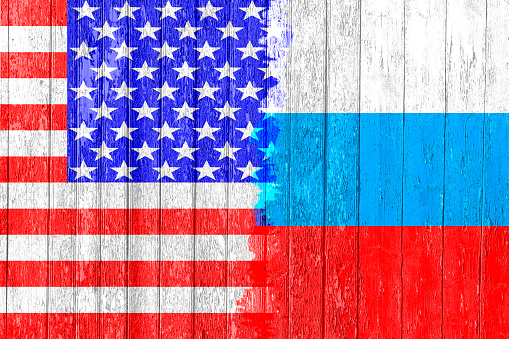This is the fourth in a series of posts by Steven J. Harper, creator and curator of the Trump-Russia Timeline, on the Mueller Report. The first three installments are available here, here, and here.
It’s just one sentence in special counsel Robert Mueller’s report, but it packs a powerful punch. In 2016, Russian intelligence penetrated a Florida voting system: “We understand the FBI believes that this operation enabled the GRU to gain access to the network of at least one Florida county government.” (Vol. I, p. 51) Sen. Marco Rubio (R-FL) then followed up with the revelation that Russian hackers were “in a position” to change voter roll data in his state.
On Apr. 26, 2019, FBI Director Christopher Wray sounded a similar alarm. “We recognize that our adversaries are going to keep adapting and upping their game,” he said. “So we are very much viewing 2018 as just kind of a dress rehearsal for the big show in 2020.”
Hardly anyone noticed. On Saturday, Apr. 27, 2019, The New York Times reported both stories on page A18. The Washington Post covered the Florida system penetration; News & Guts reported Wray’s warning. The Wall Street Journal didn’t mention either story.
The President’s Job: Defending “Against Enemies Foreign and Domestic”
The Trump-Russia Timeline reveals a pattern of Russian attacks on state voting systems far more ominous than hacking into candidates’ computers and promoting divisive social media campaigns. Trump’s refusal to shine a spotlight on the attacks — or to criticize Putin at all — remains one of the most dangerous aspects of the Trump-Russia story.
NOV. 8, 2016: On Election Day, voters in many states experience difficulties at the polls. At a North Carolina polling station, for example, poll workers tell dozens of would-be voters that they are ineligible to vote and turn them away, even though some have current registration cards.
It turns out that Russian hackers had targeted election systems in at least 21 states and successfully penetrated many of them, including Alaska, Arizona, California, Florida, Illinois, Texas and Wisconsin. Among the victims is VR Systems, an outside vendor that operated voting systems in North Carolina and seven other states. The GRU had also gained access to the network of at least one Florida county government and put Russia “in a position” to change voter roll data there.
FEB. 27, 2018: Adm. Mike Rogers, Trump’s then-director of the National Security Agency and chief of the US Cyber Command, tells the Senate Armed Service Committee that Trump hasn’t granted him the authority to disrupt Russian election hacking operations where they originate.
MAR. 1, 2018: Trump’s nominee to replace Rogers testifies at his confirmation hearing that Russia, China, and other countries do not expect a significant US response to their cyber attacks.
MAR. 6, 2018: Director of National Intelligence Dan Coats tells the Senate Armed Services Committee that the Trump administration lacks a “coherent strategy” for dealing with Russian election interference.
JUL. 13, 2018: Coats says that the persistent danger of Russian cyberattacks is akin to the warnings of stepped-up terror threats ahead of the Sept. 11 attacks: “The warning lights are blinking red again… These actions are persistent, they are pervasive and they are meant to undermine America’s democracy.”
AUG. 2, 2018: Coats and Wray appear together at the White House daily press briefing and discuss efforts to defend against Russia’s ongoing attacks on American elections. “Russia attempted to interfere with the last election,” Wray says, “and continues to engage in malign influence operations to this day.”
AUG. 8, 2018: Sen. Bill Nelson (D-FL), who is seeking re-election in November, says that Russians have already successfully attacked some of Florida’s voter registration systems. After the election, a recount shows that Nelson loses the race by 10,000 votes out of more than 8 million cast (or .125%).
JAN. 29-30, 2019: The US intelligence community’s annual “Worldwide Threat Assessment” to Congress states, “Russia in 2016 and unidentified actors as recently as 2018 have already conducted cyber activity that has targeted US election infrastructure….”
Trump’s Motivated Reasoning
MAY 3, 2019: Trump calls Putin and they speak for more than an hour. They discuss Mueller’s report, and Trump later tweets that they talked about the “Russian Hoax.” Asked later if he told Putin not to interfere in the 2020 election, Trump says, “We didn’t discuss that.”
Trump could confront Putin and provide full-throated support for Wray, Coats, and others seeking to preserve democracy. But out of 136 million votes cast in 2016, he won by a combined total of 77,000 votes (0.6%) in three states that tipped the Electoral College victory to him. At least two — Pennsylvania and Wisconsin — have subsequently been confirmed as targets of Russian voter election system attacks. Perhaps that explains Trump’s behavior.
On Apr. 24, Dan Rather tweeted:
The story of whatever is happening to votes in Florida — and perhaps elsewhere — might qualify.
Steven J. Harper is the creator and curator of the Trump-Russia Timeline appearing at Dan Rather’s News & Guts and at Just Security. He is an attorney, adjunct professor at Northwestern University Law School, and author of four books, including Crossing Hoffa — A Teamster’s Story (Chicago Tribune “Best Book of the Year”) and The Lawyer Bubble — A Profession in Crisis. He blogs at The Belly of the Beast. Follow him on Twitter (@StevenJHarper1).



